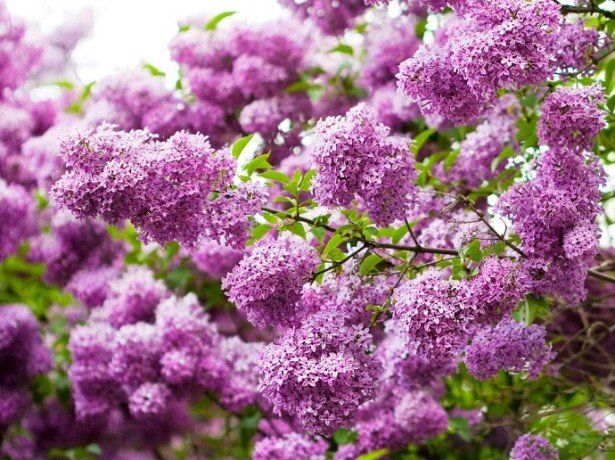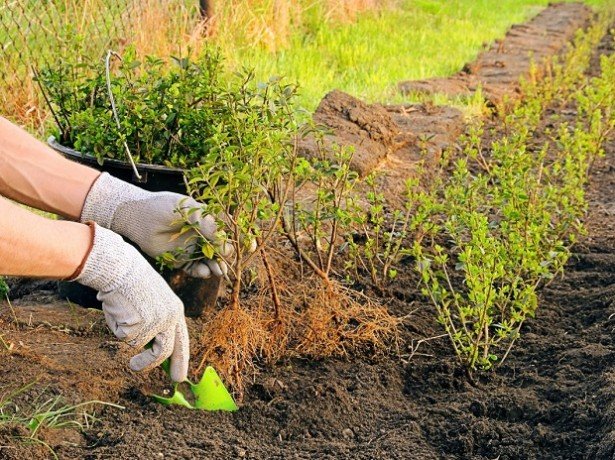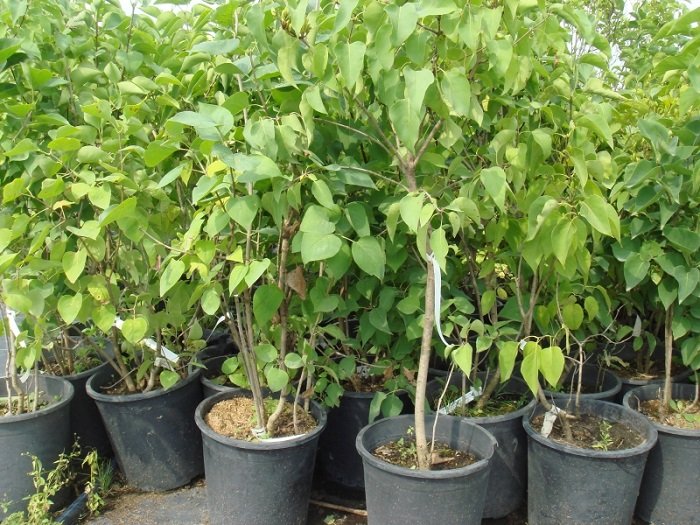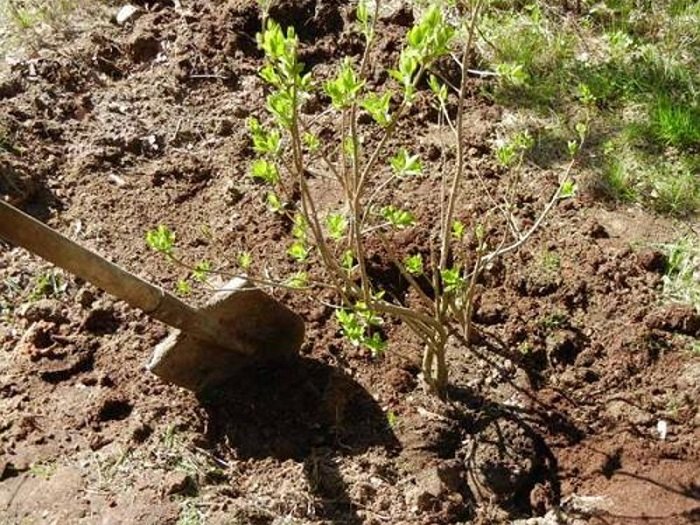Lilac - planting and caring according to the rules
TOOLS REQUIRED
DrainageWatering canShovelShovelManureOrganic fertilizerSecateursLilac
ExpandLilac is a vivid representative of flowering shrubs. The beautiful spring flowering of this plant never ceases to conquer people who care about the attractiveness of their garden, so the plant can be found in many summer cottages. In addition, these bushes practically do not require attention to themselves and grow well without any special care.
But if you decide to plant varietal lilacs, for example, Beauty of Moscow, Morning of Moscow, Sensation or other varieties, then planting and care should be taken carefully, since these bushes are already more picky.
Today in the world there are more than 20 species and more than 2000 varieties of lilacs. Each is beautiful in its own way. This is probably why, after you have made the decision to plant a couscous, you need to at least approximately familiarize yourself with the varieties, see photos and choose the one you like best. The most popular varieties to look out for are:

Whichever variety you choose for planting, you need to plant the plant correctly and take proper care of it
- Beauty of Moscow - the variety is recognized as the most beautiful in the world. The bushes of this lilac can be seen near the Moscow Kremlin, in Washington near the US Congress, in the UK near Buckingham Palace. The beauty of Moscow will undoubtedly become the main decoration of any garden and will delight with abundant and lush flowering.
- Vestal is a bush that reaches four meters in height. A distinctive feature is long flowering. Large milky white flowers.
- Congo - the bushes are not high enough, only 2-3m. The flowers are purple, with a purple tint. It looks very beautiful and original, it is often used in landscape design.
- A Kiev woman is a variety no less popular than the Beauty of Moscow. The Kiev woman is characterized by pink, blue and light purple shades of flowers.
Whichever variety you choose for planting, it is necessary to plant the plant correctly and take proper care of it, only then it will delight with large and beautiful inflorescences, will not run wild and will annually please the eye.
Video about lilac varieties
The opinion of gardeners on the question of when exactly, in the fall or in the spring to plant lilacs - differ. There is even an opinion that the most successful time for planting a bush is the middle of summer, it is at this time that the lilac grows best and gets used to new conditions. Therefore, in this matter, you should still focus on your own convenience.

In order for the bushes to bloom profusely in spring and smell deliciously for the whole garden, it is necessary to choose the right place for planting them.
But in any case, you should definitely adhere to the following recommendations:
- If you decide to plant in the spring, then you should do this until the flowering of the bush.
- The second most suitable time is mid-July, when the bush has completely faded, is resting and ready for transplantation.
- Of the three autumn months, September is the most suitable, and it must be planted before the middle of the month, when the weather is warm enough and there is no morning frost.
In order for the bushes to bloom profusely in spring and smell deliciously for the whole garden, it is necessary to choose the right place for planting them. Despite the fact that the bushes are not extremely picky, the plant does not at all like wetlands, with a close adherence of groundwater. Even a small stagnation of water can completely destroy an adult bush, as the roots die off. A young plant is even more endangered, since it is completely fragile. In addition, when choosing a place for a lilac bush, it is necessary to give preference to slightly acidic and neutral soils, in which the humus content is sufficiently high. In addition, the intended place for the bush should be well lit and inaccessible to strong winds.

If the spine is broken, and the fold has darkened, then this means that it is dead.
Separately, I would like to dwell on the choice of a seedling, since it directly depends on how well the bush will take root and when it begins to bloom. If you purchase a seedling at a specialized point of sale, then be sure to pay attention to its root system - it must have a lobe of branched roots with a diameter of at least 20-30 cm. It is also worth conducting the following test: choose one thin spine and bend it in an arbitrary place. If the spine is broken, and the fold has darkened, then this means that it is dead. The more such roots a seedling has, the worse it is, and perhaps not at all suitable for planting. Ideally, the spine should be elastic, bend well and not break.
The state of its bark will also tell a lot about the seedling. If the bark is lightly scraped, then the remaining trace should be light green. If the color of the scratch is gray or brown, then the plant is painful and should not be taken.
Never buy the first seedling you see, do not be afraid to choose, since the choice is great in spring. Only a healthy plant can bloom abundantly and bring joy.

Only a healthy plant can bloom profusely and bring joy.
As for more advice on choosing a seedling, then try to choose trees for planting at least half a meter, with 3-6 skeletal branches, which is also the key to good survival.
For planting a seedling, it is necessary to dig a hole in the selected place of about 50x50x50 cm.If it was not possible to allocate a place with fertile soil on the site, and the soil at the planting site turned out to be heavy and clayey, then additional preparatory measures must be taken. First of all, you need to put drainage on the bottom of the pit - broken bricks, small stones, pour sand. An organic component is placed on top of the sand, for example, rotted leaves or manure, which has a beneficial effect on the development of the plant's root system. The roots begin to grow deeper in order to extract nutrients, rather than staying on the surface. Fertile soil is laid on top of organic matter.
Instead of fertile soil, the pit can be filled with a nutrient mixture consisting of:
- Superphosphate - 300g
- Wood ash - 300g
- Humus - 20 kg.

Instead of fertile soil, the pit can be filled with nutrient mixture.
It is necessary to plant a seedling in the evening and better in cloudy weather. The roots of the seedling are straightened, and the plant is carefully placed in the center of the prepared fossa. While holding the tree, the hole must be carefully buried with earth or nutrient mixture, which at the end must be lightly tamped. If the seedling is a single branch, then it must be tied to a peg, which will avoid its accidental breakage during strong gusts of wind.
Immediately after planting, the young bush is watered. After the water is absorbed, rotted leaves, peat or sawdust are laid around the tree in a layer 7-8 cm thick.
If you plan to plant several bushes, then the distance between them should be at least 3 meters. Only in this case all the bushes will be able to grow and develop harmoniously without interfering with each other.
Lilac care
If, during planting, the pit was filled with a nutrient mixture or fertile soil, then for two years after that, the bush does not need to be specially fed with fertilizers, and all care, in general, will be reduced to watering as needed and loosening the soil, as well as weeding weeds. However, in the spring, in the second year of the life of the bush, it must be fed with nitrogen fertilizer. In the future, such feeding must be carried out annually.
After the bush reaches four years of age, they begin to feed it additionally with organic fertilizers every year in the summer. As practice shows, the most suitable in this case is a mullein solution (1:10), leaving is carried out at the rate of two buckets per bush. Moreover, fertilizer cannot be poured directly under the bush, this must be done at a distance of 50 cm from the tree.
An adult plant tolerates drought well, so it usually does not need watering. It is necessary to water the bushes that have not reached the age of two. Watering is required in summer, in dry weather.
Video about caring for lilacs
A young plant must be prepared for winter. In extreme cold, the roots of the bush can freeze, so they must be covered with sawdust or humus with a layer of 10 cm. Adult plants are usually resistant to cold weather; you do not need to take any additional care to prepare them for winter.
Among other things, near the bush it is necessary to remove weeds in a timely manner and loosen the soil. When used in landscape design, lilacs must be shaped and thinned out. It is possible to form lilacs by cutting off branches in the form of a ball or in the form of a tree. It is also worth noting that for "wild" varieties, all care can be reduced to the annual partial cutting off of shoots with flowers, when the second phase of flowering begins, as this will make the bush more lush.




